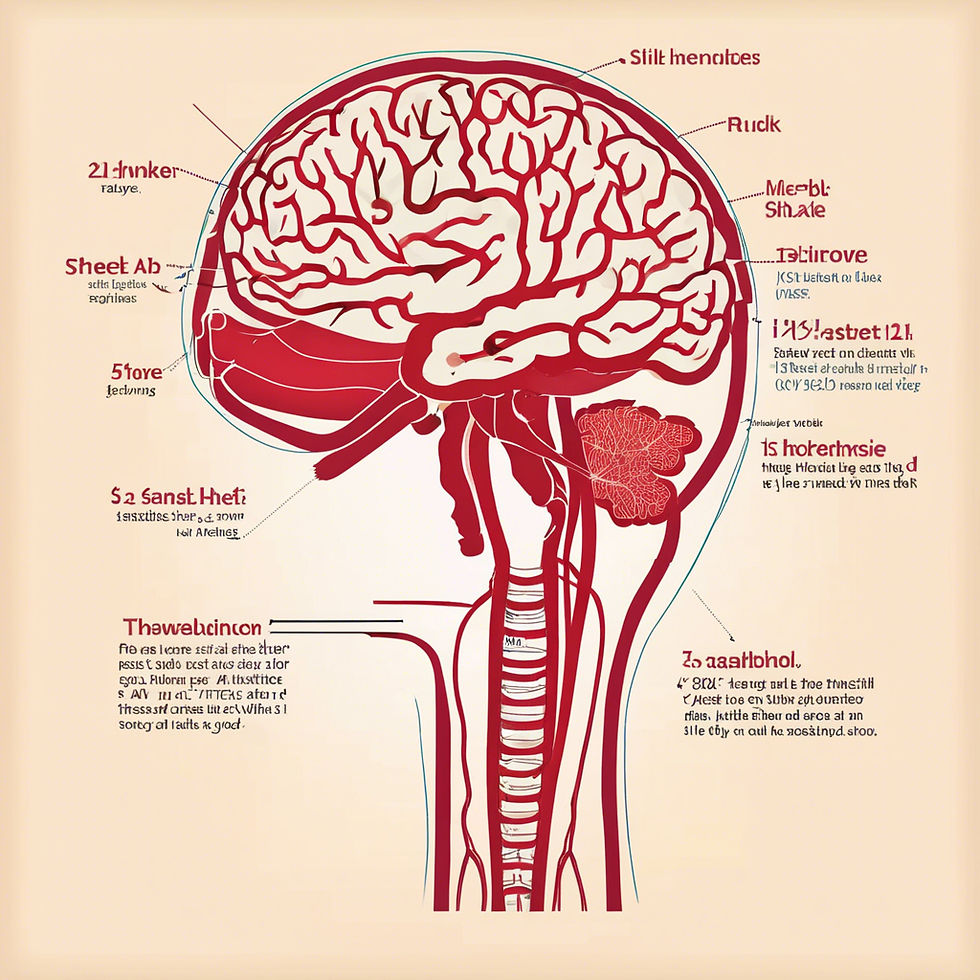
Understanding Stroke: A Silent Threat to Global Health
- Admin
- Jul 1, 2024
- 3 min read

Stroke is a major global health issue, affecting millions of people each year and ranking as one of the leading causes of disability and death worldwide. Despite its prevalence, many people remain unaware of the warning signs and risk factors associated with stroke. Raising awareness and understanding about this critical condition can help save lives and improve outcomes for stroke survivors.
What is a Stroke?
A stroke occurs when the blood supply to a part of the brain is interrupted or reduced, preventing brain tissue from getting the oxygen and nutrients it needs. Within minutes, brain cells begin to die. There are two main types of strokes:
1. Ischemic Stroke: This is the most common type, accounting for about 87% of all strokes. It occurs when a blood clot blocks a blood vessel in the brain.
2. Hemorrhagic Stroke: This type occurs when a blood vessel in the brain bursts, leading to bleeding within or around the brain.
The Global Impact of Stroke
Approximately 80 million people have experienced a stroke globally, and it is a leading cause of long-term disability. The economic and social impacts of stroke are significant, affecting not only individuals but also families, healthcare systems, and societies at large.
Risk Factors for Stroke
Several factors can increase the risk of having a stroke, including:
- High Blood Pressure : The leading risk factor for stroke. Managing blood pressure is crucial for stroke prevention.
- Smoking: Tobacco use significantly increases the risk of stroke.
- Diabetes: Diabetes can damage blood vessels, increasing the risk of stroke.
- Heart Disease: Conditions such as atrial fibrillation and heart failure can lead to stroke.
- Obesity: Excess weight increases the risk of stroke, particularly when combined with other risk factors.
- Sedentary Lifestyle: Lack of physical activity contributes to many stroke risk factors.
- Unhealthy Diet: Diets high in saturated fats, trans fats, cholesterol, and sodium can increase stroke risk.
Recognizing the Signs of Stroke
Knowing the signs of stroke and acting quickly can save lives. The acronym **FAST** is a helpful way to remember the sudden signs of stroke:
- Face drooping: Is one side of the face numb or drooping?
- Arm weakness: Is one arm weak or numb?
- Speech difficulty: Is speech slurred or hard to understand?
- Time to call emergency services: If any of these signs are present, call emergency services immediately.
Prevention and Treatment
Preventing stroke involves managing risk factors through lifestyle changes and medical interventions:
- Healthy Diet: Eating a balanced diet rich in fruits, vegetables, whole grains, and lean proteins can reduce stroke risk.
- Regular Exercise: Engaging in regular physical activity helps maintain a healthy weight and lowers blood pressure.
- No Smoking: Quitting smoking significantly reduces stroke risk.
- Limit Alcohol: Drinking alcohol in moderation can help reduce stroke risk.
- Regular Check-ups: Monitoring blood pressure, cholesterol levels, and diabetes through regular medical check-ups is essential.
Stroke Recovery and Rehabilitation
Recovery from a stroke can be a long and challenging process. Rehabilitation often involves a team of healthcare professionals, including doctors, nurses, physical therapists, occupational therapists, and speech therapists. The goal is to help stroke survivors regain as much independence and functionality as possible.
Conclusion
Stroke is a significant global health concern with profound implications for individuals and communities. By understanding the risk factors, recognizing the warning signs, and taking proactive steps to prevent and manage stroke, we can reduce its devastating impact. Increased awareness and education are key to combating this silent threat and improving the lives of those affected by stroke.
For more health tips and information, visit [asabme.com]































Comments